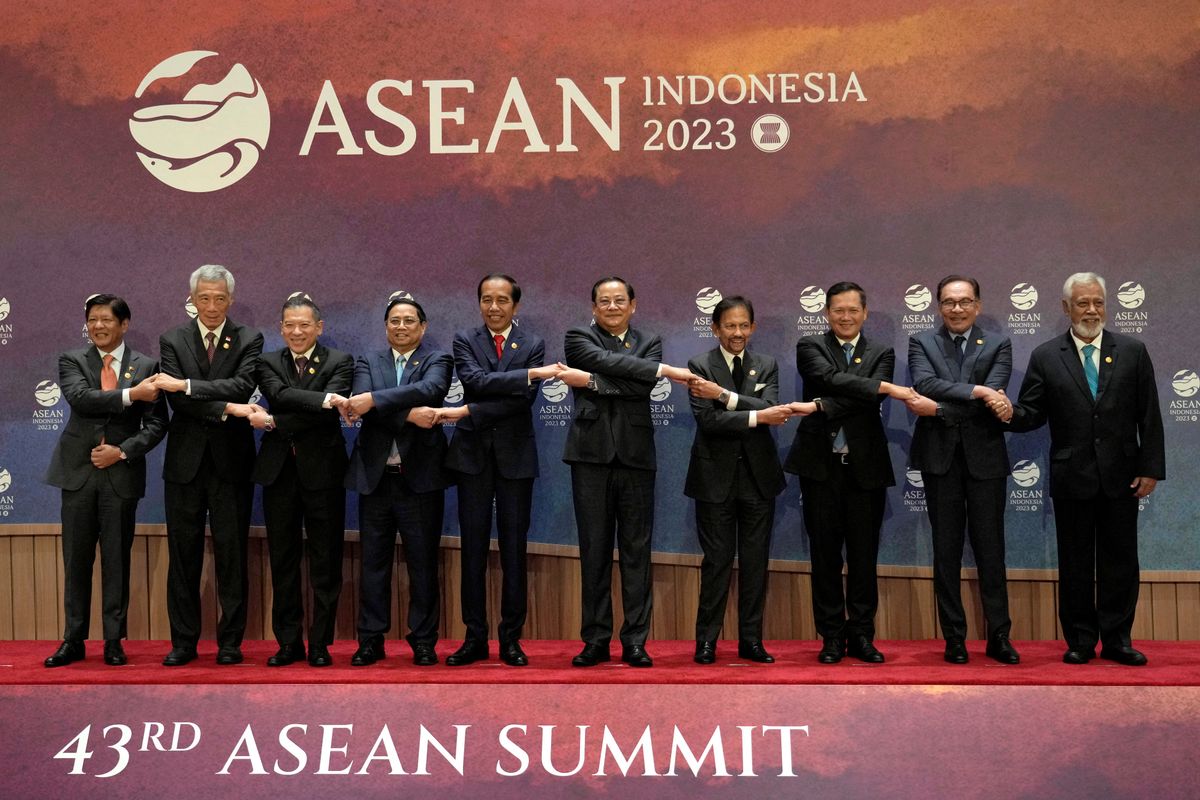The ASEAN AI Guide leans toward business-friendly AI regulation
Southeast Asian countries are taking a unique approach to AI rules compared to the EU.

A few minutes every morning is all you need.
Stay up to date on the world's Headlines and Human Stories. It's fun, it's factual, it's fluff-free.
The backstory: Remember around late 2022 when generative artificial intelligence (AI) caused a big stir thanks to OpenAI's ChatGPT? It burst onto the scene and created quite a buzz about the technology, with Silicon Valley pouring in investments left and right. But the world is on high alert about this quickly developing tech. Countries like the US, the EU, Brazil and China are racing to establish AI regulations to prevent its potential misuse, particularly in spreading misinformation.
So far, the EU is leading the charge. The bloc is also aiming to create a global framework that other countries can also follow. Its AI Act is in the final stages of negotiation, with plans to make it operational by late 2025. This law divides AI into “low and minimal risk,” "high risk" and "unacceptable" categories. High-risk AI, like biometric identification and legal tools, will need a green light before they're used. Unacceptable AI, like facial recognition and social scoring, will be banned. Plus, it emphasizes transparency, with rules for disclosing artificially generated content and registering foundational models.
But when we look at Southeast Asia, it's a different story. The region has its own rules amid a complex web with many different cultures and laws. For example, in places like Thailand, criticizing the monarchy is a big no-no. So the region’s approach to AI regulation is a little less “one-size-fits-all.”
More recently: In February, ministers from the Association of Southeast Asian Nations (ASEAN), representing over 600 million people, began discussing an "AI guide" for the region. Meanwhile, nations like Japan and South Korea in the broader Asian context are adopting a more relaxed approach to AI regulation.
The development: Southeast Asian countries are taking a unique approach to AI rules compared to the EU. ASEAN just rolled out a "guide to AI ethics and governance." It's a whole new take on AI rules that hasn't been reported before, and Reuters has seen this confidential document.
What's the difference here? While the EU leans towards stringent rules, ASEAN is opting for a more flexible, business-friendly approach. This "AI guide" recognizes the region's cultural diversity and holds back on imposing predefined risk categories. Notably, it operates on a voluntary basis, offering guidance rather than rigid mandates for domestic regulations.
This approach has found favor with tech industry leaders who see it as a way to foster innovation and reduce compliance burdens in a region where local laws can already be pretty complex. IBM Asia's Vice President of Government Affairs, Stephen Braim, even praised the guide for aligning with other prominent AI frameworks. As for the timeline, the guide is currently in the feedback stage, with major tech players like Meta, IBM and Google providing their input. The finalization is set for the ASEAN Digital Ministers Meeting in January 2024.
Key comments:
"We are also pleased to see this guide aligns closely with other leading AI frameworks, such as the United States’ NIST AI Risk Management Framework," said IBM Asia's vice president of government affairs Stephen Braim.
"What we think is important is to have similar principles," said a European Commission spokesperson to Reuters. "We are not seeking full harmonization, as we are mindful of cultural differences; however, we regard the underlying principles as important."
“With generative AI, the power of the tool is its ability to be creative and to connect things that you wouldn’t expect to be connected, and to do things in different styles that are expected,” said Matt Sheehan, a fellow at the Carnegie Endowment for International Peace who studies AI and China, to Al Jazeera. “But how can you prevent the maybe subtler or less direct criticisms of the Communist Party’s core beliefs without completely neutering the tool itself? That seems like a really hard technical and sociopolitical problem.”




Comments ()